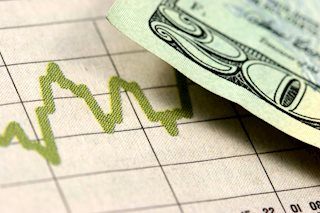US Dollar retreats and consolidates after Retail Sales and Powell's words
|
- The USD retreated on Friday after hitting yearly highs near 106.60.
- The market has responded to Fed Chair Powell's comments with odds of a December cut falling to 60%.
- Retail Sales expanded by 0.4% in October vs. the previous month, surpassing expectations.
The US Dollar Index (DXY), which measures the value of the USD against a basket of six currencies, failed to secure a sixth consecutive day of gains in a volatile trading Friday. Federal Reserve (Fed) Chair Jerome Powell has instilled uncertainty in the markets by expressing reservations about a December interest rate cut, while markets assess fresh Retail Sales data.
The US Dollar Index retreated slightly after reaching its highest point of the year. However, DXY remains in an uptrend, bolstered by cautious Fed rhetoric and strong economic data, which gives the Greenback an advantage over its peers.
Daily digest market movers: US Dollar declines as markets assess Powell’s words and Retail Sales
- Fed Chair Powell downplayed the need for aggressive easing, citing economic strength.
- Fed officials, including Kugler, reiterated the need for caution in rate cuts.
- Market odds of a December cut have declined to 60% in fed funds futures and 45% in swaps markets.
- Swaps market anticipates a terminal rate above the Fed's long-term rate of 2.875%.
- US Retail Sales expanded by 0.4% in October, exceeding expectations and surpassing September's growth.
- Retail Sales Control Group contracted by 0.1%, while excluding Autos sales grew 0.1% MoM, below consensus.
DXY technical outlook: Bulls retreat as investors book profits
The DXY's rapid surge to yearly highs above 107.00 was met with swift profit-taking, indicating a potential shift in market sentiment. The retreat suggests that buyers may have been overextended and a pullback could be in order.
Indicators including the Relative Strength Index (RSI) and the Moving Average Convergence Divergence (MACD) continue showing overbought conditions, so it is likely that the consolidation will continue.
Interest rates FAQs
Interest rates are charged by financial institutions on loans to borrowers and are paid as interest to savers and depositors. They are influenced by base lending rates, which are set by central banks in response to changes in the economy. Central banks normally have a mandate to ensure price stability, which in most cases means targeting a core inflation rate of around 2%. If inflation falls below target the central bank may cut base lending rates, with a view to stimulating lending and boosting the economy. If inflation rises substantially above 2% it normally results in the central bank raising base lending rates in an attempt to lower inflation.
Higher interest rates generally help strengthen a country’s currency as they make it a more attractive place for global investors to park their money.
Higher interest rates overall weigh on the price of Gold because they increase the opportunity cost of holding Gold instead of investing in an interest-bearing asset or placing cash in the bank. If interest rates are high that usually pushes up the price of the US Dollar (USD), and since Gold is priced in Dollars, this has the effect of lowering the price of Gold.
The Fed funds rate is the overnight rate at which US banks lend to each other. It is the oft-quoted headline rate set by the Federal Reserve at its FOMC meetings. It is set as a range, for example 4.75%-5.00%, though the upper limit (in that case 5.00%) is the quoted figure. Market expectations for future Fed funds rate are tracked by the CME FedWatch tool, which shapes how many financial markets behave in anticipation of future Federal Reserve monetary policy decisions.
Information on these pages contains forward-looking statements that involve risks and uncertainties. Markets and instruments profiled on this page are for informational purposes only and should not in any way come across as a recommendation to buy or sell in these assets. You should do your own thorough research before making any investment decisions. FXStreet does not in any way guarantee that this information is free from mistakes, errors, or material misstatements. It also does not guarantee that this information is of a timely nature. Investing in Open Markets involves a great deal of risk, including the loss of all or a portion of your investment, as well as emotional distress. All risks, losses and costs associated with investing, including total loss of principal, are your responsibility. The views and opinions expressed in this article are those of the authors and do not necessarily reflect the official policy or position of FXStreet nor its advertisers.